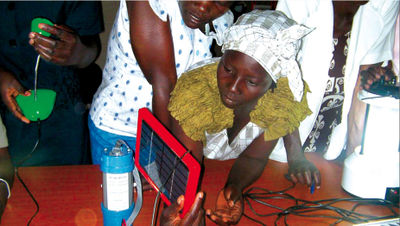Knowledge fuels change - Support energypedia!
For over 10 years, energypedia has been connecting energy experts around the world — helping them share knowledge, learn from each other, and accelerate the global energy transition.
Today, we ask for your support to keep this platform free and accessible to all.
Even a small contribution makes a big difference! If just 10–20% of our 60,000+ monthly visitors donated the equivalent of a cup of coffee — €5 — Energypedia would be fully funded for a whole year.
Is the knowledge you’ve gained through Energypedia this year worth €5 or more?
Your donation keeps the platform running, helps us create new knowledge products, and contributes directly to achieving SDG 7.
Thank you for your support, your donation, big or small, truly matters!
PicoPV Field Tests
Overview
More than 100 firms are offering PicoPV products in developing countries today[1] and new products are introduced almost daily[2]. But most products are of very low quality, with serious implications for consumer trust in the new technology. Early lab tests have focused the awareness of governments and donors on the importance of quality control and customer information – however, field tests in sufficient countries with sufficient sample sizes are needed for a better understanding of PicoPV performance under real-life conditions, and to identify gaps in the emerging draft lab test procedures. Therefore, it is important to complement laboratory test with field tests. In addition, private sector actors lack basic market information on this new technology (such as national market potentials, local consumer preferences and willingness to pay) which they would need to decide if and how to enter this new market segment.
Instruments for Field Survey
In order to help bridge these information gaps and support the development of the nascent PicoPV market, GIZ has launched a comprehensive PicoPV field test and survey in five developing countries across different continents, using a range of specially developed research tools.[1]
GIZ also developed various instruments in order to accomplish researches on consumer needs and impacts. These instruments are based on quantitative and qualitative methods.
In order to develop the market for PicoPV, it is important to fínd out more about consumer needs.
PicoPV Systems
► More information about the PicoPV technical test
► A specific example of technial test on solar lantern
Further Information




















